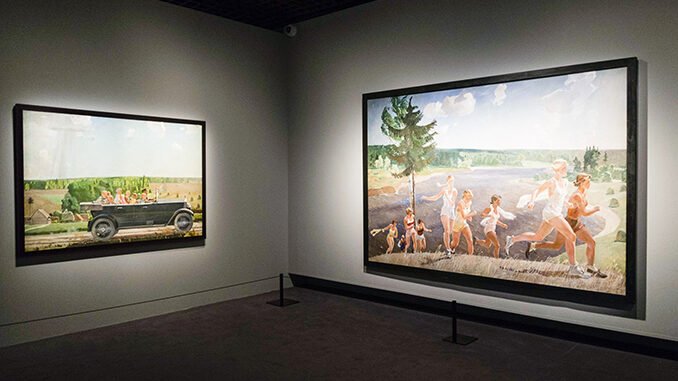
Rouge (Red) is the title of a large-scale exhibition of Soviet artwork, films, and sound documents presently show in the Grand Palace in Paris. Although interjected with some mild critique, the show feels like a romanticised vision of one of the largest suppressive and murderous regimes in the history of humankind. France still has a fascination with everything Russian. It is still visible in the French capital with numerous streets and places named after locations in Russia (a Rue de Léningrad in one of the suburbs)
What would the French public think of an exhibit of Nazi propaganda? Yet that regime co-existed during most of what is on display here with the same cruelty, the systematic murders of opponents, and many similarities in the depictions. Those facts are clearly documented. More people died during Soviet brutality, particularly during Stalin’s reign of terror.
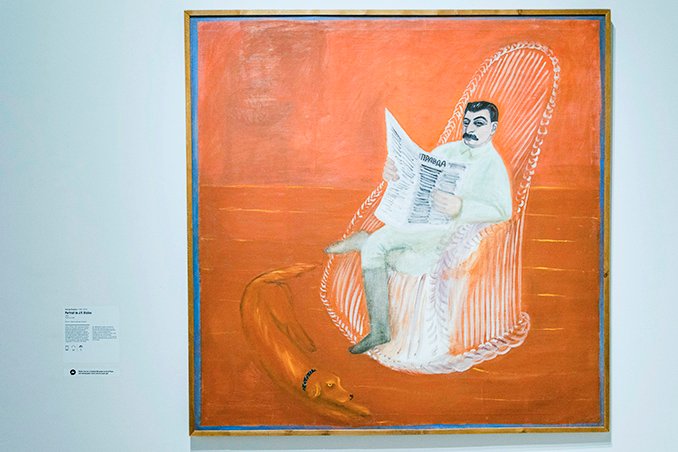
‘Rouge’ does show how the murderous regimes of Lenin and Stalin changed the artistic landscape and output. Some of the artists compiled in support of the government and contributed to the ‘new society’. Shortly after 1917, there were still various opinions as to how that art should look like. By late 1920, Stalin’s brutal regime ensured that there was no deviance from the official line.
Glorifying workers and forms of ‘socialist realism’ was the official doctrine and affected all forms of artistic output. This style and output were not limited to Russia. Socialist motivated artists in Western Europe (and parts of Asia) were inspired by a romantic version of socialism where the worker was the centrepiece of their output, represented in Rouge by work of the Belgian socialist engraver Frans Masereel and the pro-communist posters of the German Alex Kai.
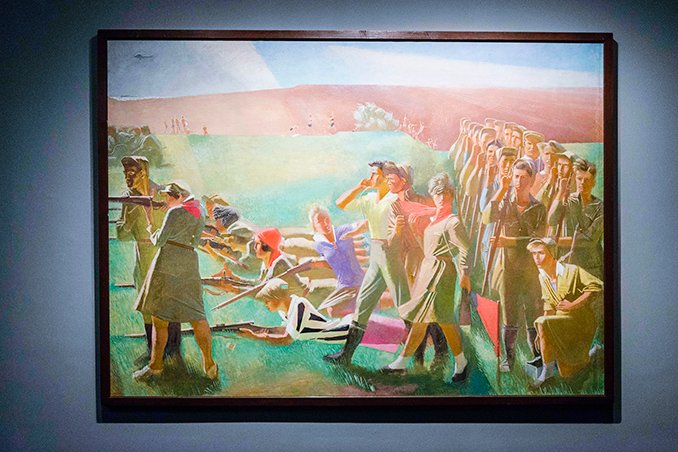
One comes away from this exhibition with a strange feeling of nostalgia for a regime that reigned in an atmosphere of terror and suppression and imploded under a combination of economic mismanagement and crushing corruption.
Putting the legacy of politicised art in its proper context is largely missing at Rouge. What is left is a regime-induced form of art, often glorifying a murderous dictator. The exhibition Rouge (Red) in Paris ends with a veneration of the personal cult of that autocrat, Stalin, a man that saw more murdered on his watch than the entire Nazi-regime. The book and souvenir shop plays up to the idealised dream as few can. If only most visitors knew the nightmare of reality.
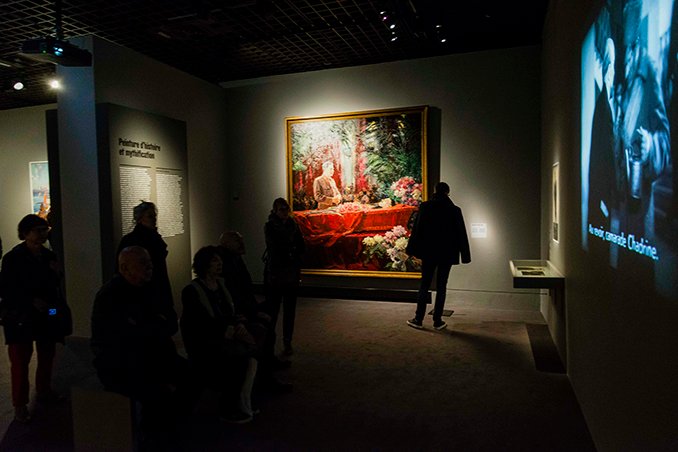
Lithuanian community in Paris is not impressed
Representatives of the Lithuanian community have written a letter of protest drawing attention to the scars that the regime has left on the world and calling for sensitivity to its victims in many parts of the world. The response by the Grand Palace’s director was, not surprisingly, defensively at best. At the suggestion of the Lithuanian community representatives ‘Haikus of Siberia’ was put in the bookshop. Rouge in the Grand Palace in Paris until 1 July 2019.

Visitors to the Rouge exhibition in Paris Photo © Ludo Segers @ The Lithuania Tribune 
Various movie clips show at Rouge in Paris Photo © Ludo Segers @ The Lithuania Tribune 
The great leader in grand style at Rouge in Paris Photo © Ludo Segers @ The Lithuania Tribune 
Stalinist ideal society at Rouge in Paris Photo © Ludo Segers @ The Lithuania Tribune 
Something Red to take home at Rouge in Paris Photo © Ludo Segers @ The Lithuania Tribune 
Rouge Paris Engraver Frans Masereel Photo © Ludo Segers @ The Lithuania Tribune 
Rouge Exhibition in Paris Photo © Ludo Segers @ The Lithuania Tribune 
Recording history in paintings at Rouge in Paris Photo © Ludo Segers @ The Lithuania Tribune 
Red to take home at Rouge in Paris Photo © Ludo Segers @ The Lithuania Tribune 
Poster art at Rouge in Paris Photo © Ludo Segers @ The Lithuania Tribune 
More red art at the bookshop of Rouge in Paris Photo © Ludo Segers @ The Lithuania Tribune 
Poster art at Rouge in Paris Photo © Ludo Segers @ The Lithuania Tribune 
Maquette with Lenin statue at Rouge in Paris Photo © Ludo Segers @ The Lithuania Tribune 
Late Stalinist art at Rouge in Paris Photo © Ludo Segers @ The Lithuania Tribune 
German poster art by Alex Kai at Rouge in Paris Photo © Ludo Segers @ The Lithuania Tribune 
Elevating to mythical hights whilst recording history in paintings at Rouge in Paris Photo © Ludo Segers @ The Lithuania Tribune 
First photomontage in the USSAR at Rouge in Paris Photo © Ludo Segers @ The Lithuania Tribune 
At the fish cannery factory at Rouge in Paris Photo © Ludo Segers @ The Lithuania Tribune 
A souvenir shop to take something red home at Rouge in Paris Photo © Ludo Segers @ The Lithuania Tribune


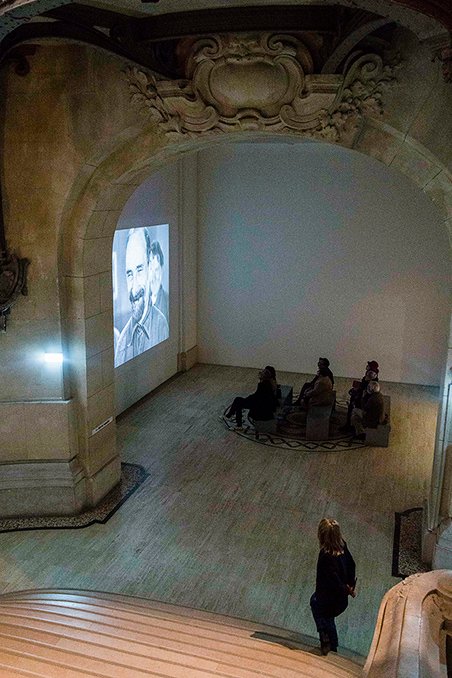


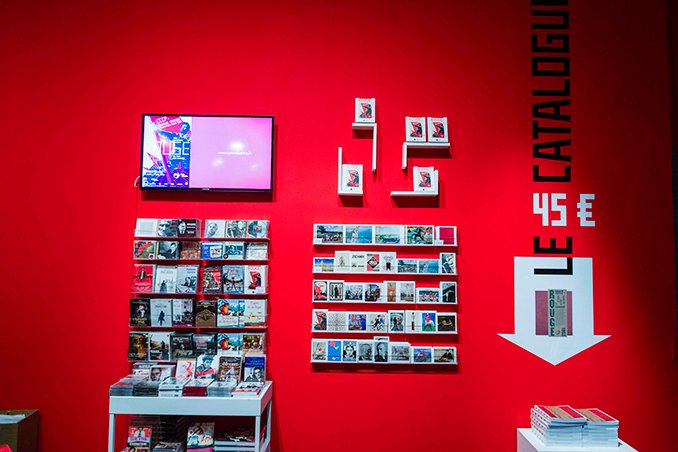



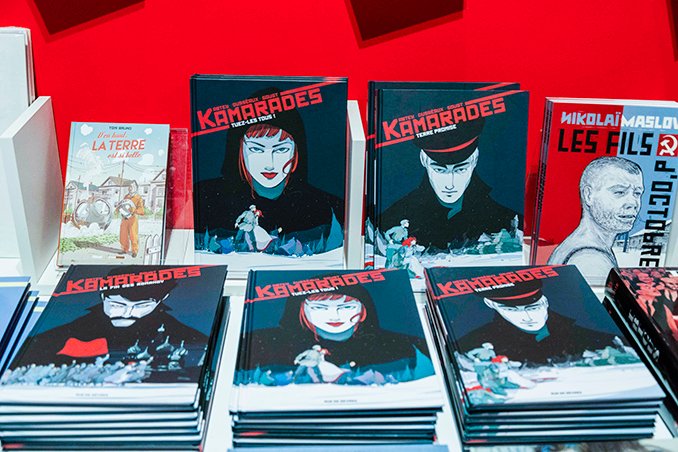
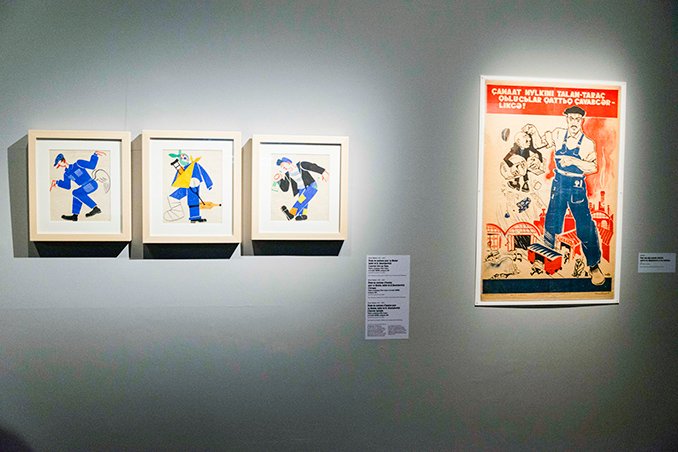


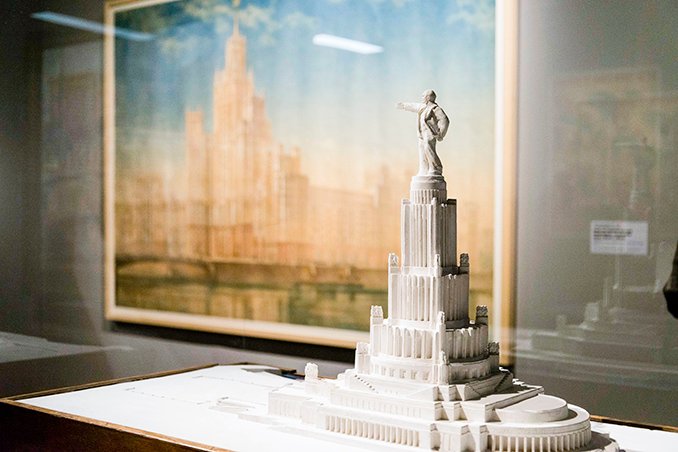


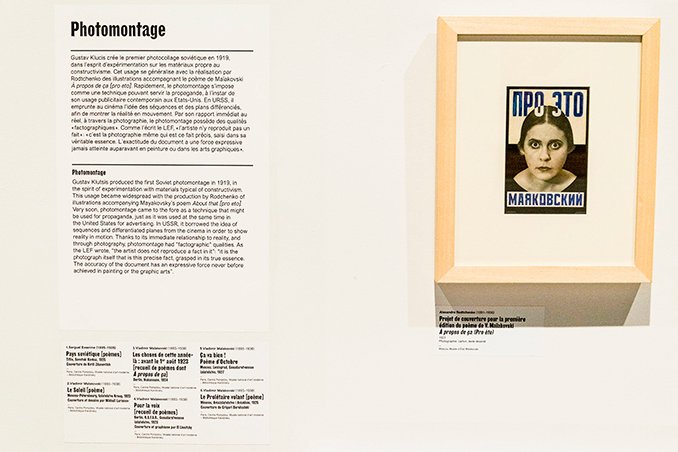

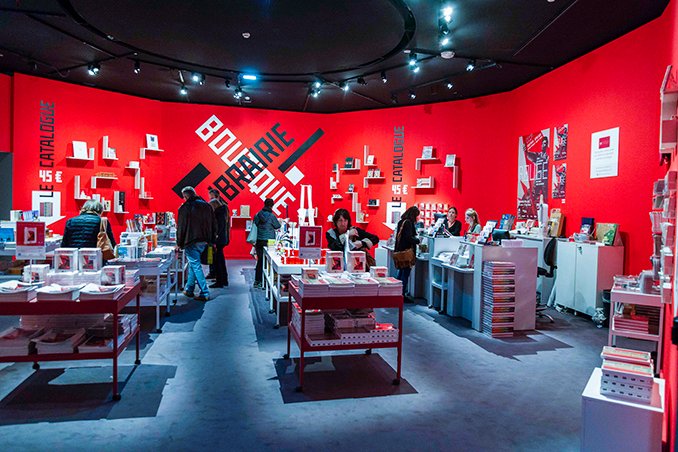
Be the first to comment